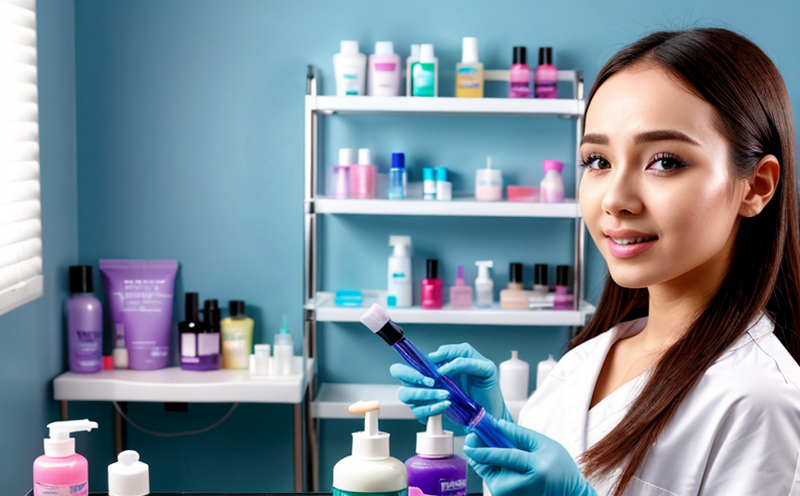OECD Validation of Microbiological Methods in Cosmetics
The OECD (Organisation for Economic Co-operation and Development) validation process is a cornerstone in ensuring that microbiological methods used in cosmetic products are reliable, reproducible, and fit for purpose. This service involves the comprehensive evaluation and validation of microbiological methods according to OECD guidelines. These guidelines are designed to ensure robustness and consistency across various testing scenarios, making them indispensable for quality managers and compliance officers within the cosmetics industry.
The process typically begins with a detailed review of the intended use of the method, including its application in cosmetic product manufacturing or formulation. This review is crucial because it sets the stage for understanding how the method will be used in real-world scenarios. Subsequently, we conduct an initial validation study to establish baseline data and assess the performance of the method under controlled conditions.
The next step involves extensive testing using a range of samples that are representative of those encountered in industry. These samples may include various cosmetic formulations such as lotions, creams, shampoos, and makeup products. The goal is to ensure that the method can accurately detect microorganisms present at levels typically found in these products.
Once initial validation data has been collected, we proceed with a more rigorous assessment using both positive and negative controls. Positive controls are used to demonstrate that the method can correctly identify microorganisms when they are present, while negative controls ensure that no false positives arise. This dual approach is vital for maintaining accuracy and reliability.
The OECD validation process also emphasizes interlaboratory comparisons, where multiple laboratories work together to validate a given method. This collaborative effort helps in identifying any discrepancies or issues that might arise due to differences in laboratory practices or equipment. By addressing these challenges early on, we can ensure that the validated methods are universally applicable and consistent across different facilities.
Finally, extensive data analysis is conducted to evaluate statistical parameters such as precision, accuracy, sensitivity, specificity, and reproducibility. These metrics provide a comprehensive overview of how well the method performs under various conditions. The aim is not only to meet but exceed industry standards, ensuring that the validated methods are robust enough for real-world applications.
Throughout this process, we employ state-of-the-art facilities equipped with advanced instrumentation capable of detecting even trace amounts of microorganisms. This ensures that our validation studies reflect the highest level of accuracy and reliability possible. By adhering strictly to OECD guidelines, we can provide clients with validated methods that are trusted by regulatory bodies worldwide.
In summary, the OECD validation process is a meticulous yet essential step in ensuring the quality and safety of cosmetic products. It involves rigorous testing, interlaboratory comparisons, and thorough data analysis aimed at producing reliable and reproducible results. This service is particularly valuable for quality managers, compliance officers, R&D engineers, and procurement teams who seek to ensure that their methods meet international standards.
Applied Standards
| Standard | Description |
|---|---|
| OECD Guideline for the Testing of Chemicals: Validation of Methods for Microbiological Detection in Cosmetic Products (TG 156) | This OECD guideline provides comprehensive protocols and criteria for validating methods used to detect microorganisms in cosmetic products. It ensures that the validated methods are reliable, reproducible, and fit for purpose. |
| ISO/IEC 17025:2017 | This international standard specifies general requirements for the competence of testing and calibration laboratories. Compliance with this standard ensures that our validation services meet high-quality standards. |
Eurolab Advantages
As a leading provider of OECD validation services in cosmetics, Eurolab offers several advantages that set us apart from other service providers:
- Comprehensive Expertise: Our team consists of highly skilled microbiologists and chemists with extensive experience in validating methods according to OECD guidelines.
- State-of-the-Art Facilities: We operate cutting-edge laboratories equipped with the latest instrumentation, ensuring that our validation studies are conducted under optimal conditions.
- Rigorous Quality Control: Our facilities adhere strictly to ISO/IEC 17025:2017, guaranteeing consistent and reliable results.
- Interlaboratory Comparisons: We actively participate in interlaboratory comparisons to ensure that our methods are validated under real-world conditions.
- Client-Centric Approach: Our focus is on understanding the specific needs of each client, tailoring our services accordingly to meet their unique requirements.
These advantages make Eurolab a trusted partner for quality managers and compliance officers seeking reliable methods validated according to OECD guidelines.





